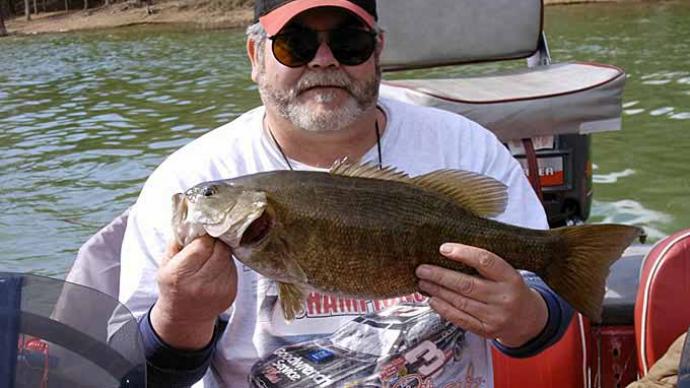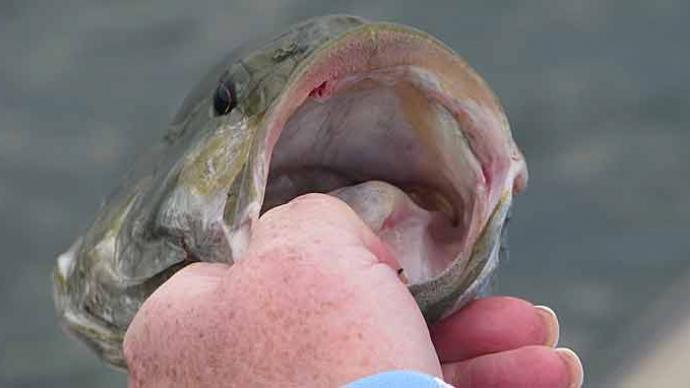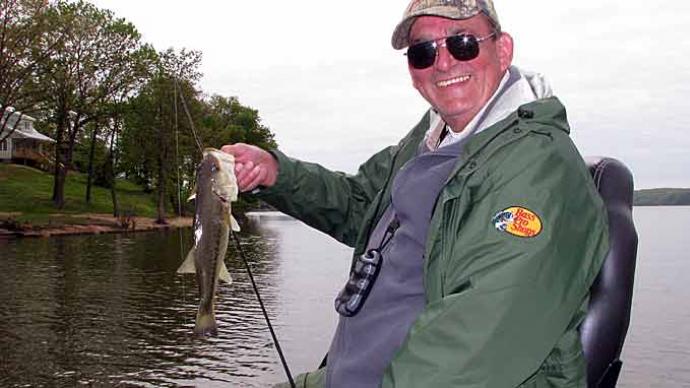
Those who have known me over the years through my articles or seminars have probably gotten a dose of my philosophy about fishing bedding bass. Essentially I don't fish for bedding fish. A lot of people do choose to develop the skills needed for working spawning bass and it certainly isn't illegal so it is an individual's preference. In fact a number of excellent fishermen have refined techniques for bedding fish and include those as part of their spring strategy.
So since we are entering that season again maybe it would be useful to look at the issues.
I want to start with getting some scientific experience as a basis for weighing the pros and cons. There seemed to be no better place to start with than a highly respected fisheries biologist, Mr. Charles Inman. I have had the privilege knowing Charlie since I moved to east Texas in the mid- 70's. He retired from the Parks and Wildlife Department several years ago, but the respect for his knowledge of fisheries has kept him in demand for input in private lake management. It should also be appreciated that Mr. Inman was inducted several years ago into the Freshwater Fisheries Hall of Fame in Athens, which was for recognition of his impact on bass management in the state.
In general Charlie felt that fishing for bedding fish would not negatively impact a lake. There are several reasons for this assumption. For starters even in a clear-water lake there are, in theory, a large number of bass that should spawn and never be subject to fishing pressure by being found by the fisherman. The exception here is if the lake is very small or there is extensive repetitious pressure in a small area. Those conditions can put real stress on the spawning population by having them either selectively removed if people catch and keep the spawning bass or simply put the bass under repetitious physiological shock from multiple harassment or hook sets.
But under the ideal situation where only a small percentage of bedding bass are distributed, there isn't in Mr. Inman's opinion a negative impact on a fishery.
| To fish or not to fish for bedding bass has been debated for many years |
I was particularly interested in what effect the reduced pressure during the spawn might have on the population of offspring in a given area. This could be something as simple as blocking off a cove from fishing. Interestingly Charlie felt that under generally normal conditions such measures wouldn't make an impact. The reasoning behind this is that a two-pound spawning bass may produce 20,000 eggs of which as few as five percent may survive to the adult stage. The loss of the majority of the small fish occurs from natural events. In this scheme there shouldn't be a problem of numbers of potential fry available given a reasonable population of successfully spawning bass.
The real problem of increasing the "catchable" population is getting them through the first winter. There usually is some cover in shallow water to give the fry some protection. But with dropping temperatures bass move away from the banks and unless there is deeper water cover (in eight to 12 feet) then the little guys become food for everything else including the lovely water turkeys. In fact, Charlie emphasized that increasing cover in this depth of water was in his opinion a major management tool.
The survivability of the one-year-old bass also depends on weather conditions and food availability. The two may be linked when a summer draw down results in much of the cover in old lakes being on the bank and the little bass, as well as their food sources, are easier forage for everything else that is larger.
In a lake where there have been die-offs such as Rayburn and Fork, Mr. Inman suggested there may be some reasonable logic to infuse numbers of new Florida stockers. The reasoning is that because of the die-off an influx of pure Floridas may act the same as new stockings do within a new lake. They could rapidly populate since the competition is less because of voids previously filled by the lost fish.
The other issue as far as efficiency for catching bedding bass is based what presentation you are using. Artificial lures are much harder to use in enticing a strike than live bait. In fact I have watched folks fish right through a nest that they didn't realize was there and seen the bass take the bait, but usually the fisherman removed it via his retrieve without inducing or feeling a strike.
An inherent protection for bedding fish also occurs in lakes where there is turbid or off-colored water. If you don't see the bass on the nest, then the chances are good that your random cast will miss the nest or you will work the artificial bait out of the nest without ever causing a pickup. It is rare that even those specializing in sight fishing don't have to make numerous presentations to hook a bedding fish. The fish that you normally catch around the nest are males, which are acting both as sentinels as well as at certain times willing to eat an easy meal.
The rules of effective exploration of bedding bass change if the fisherman actually knows where the bed is located and is willing to make multiple casts until the fish gets the hook part of the plug into a location where she can be snagged. The rules also change when you use a waterdog in working a nest. Bass hate these creatures. If it is shown they transmit bass viruses, bass fishermen may not find them very loveable either. But as far as sight fishing for bass, these creatures are almost 100 percent effective. The other problem is that bass tend to take them deeper thus mortality from hook penetration is more likely.
I respect Mr. Inman's opinion that fishing for bedding fish in a healthy lake should not effect the standing population of bass. If your lake isn't blessed with an abundant bass population then you have to decide if you think pulling a spawning bass off a nest could potentially cost one, 1,000 or 20,000 or more loss of fry produced by that fish that year. The tempering factor may really be Mr. Inman's comment that at best we are shooting for a five percent survival of whatever the hatch we may have from that fish.
It must also be remembered that as Mr. Imnan noted that winter is the most challenging and stressful time for an animal's survival. So the spawning bass have just survived the toughest time of their overall year and are now having that compounded by trying to get eggs laid and hatched. Further stress is added in that females have gaps of non-feeding periods during this time.
In short these are weakened fish, that have overcome great odds to even get to the point where they are trying to further the species that we all respect and care greatly to protect.




